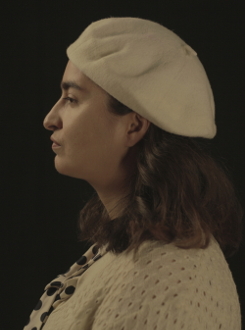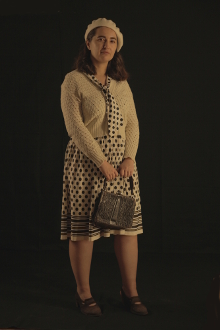Anka Leśniak
works
biography texts contact
2020
2019
2018
2017
2016
2015
2014
2013
2012
2011
2010
2009
2008
2007
2006
2004
WORKS 2017
For Zofia / Flower for Zofia
For Zofia installation
Flower for Zofia performance
Railway Station in Leszno, Poland
curator: Magdalena Swacha
photo documentation: Jakub Łączny
The inspiration for artistic activity here was a mysterious and yet tragic scene which took place at the railway station in Leszno (Poland) on the night of 27th to 28th of May in 1947. There was a shootout between Soviet soldiers stationed in Poland at that time and a platoon of the Polish army. The 'cause' of the conflict was a young woman, or perhaps infact her husband, who as she claimed, sold her together with a child to the Russians for a bottle of vodka. The Russians abandoned the child, but they were taking 21-year-old Zofia Rojuk to their military station in Legnica. When the drunken soldiers felt asleep, Zofia asked a passenger for help. The passanger reported it to the train manager and together with railroad police they tried to persuade the Russians to free the woman. When their efforts turned out to be ineffective, they contacted the police station in Leszno.

They policemen arrived at the railway station but were forced to withdraw when the Soviet soldiers threatened them with weapons. The policemen had notified the Polish army which surrounded the railway station. During the negotiations between Polish and Russian soldiers suddenly a shootout started, in which Soviet soldiers were killed. Polish soldiers also died – but later - when they were sentenced to death or long-term of imprisonment.
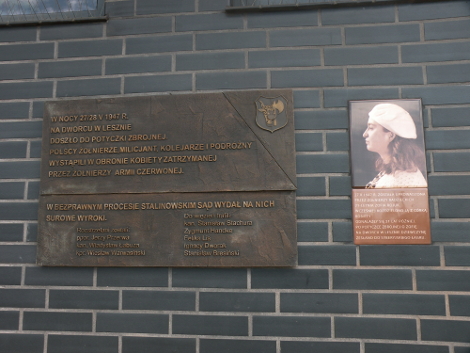
There are two version of what happened at the railway station. According the first one officially promoted by the communist government of Poland, Polish soldiers started the firing and the woman taken by the Soviets was said to be a German spy. The second version is based on witness accounts and says that the Russians opened fire first and provoked the shooting. In 2014, a commemorative plague with the names of the Polish soldiers was installed at the railway station in Leszno. As it is written on the plaque – the soldiers stood up for the woman and that cost them their lives. But Zofia's name and her tragic story is also known. She was sentenced to work in a Russian camp in Siberia, which caused a long separation from her daughter. So one may say that Zofia Rojuk's case is a model which proves that women are treated as an object and they are subjeted to violence in all kinds of military conflicts. Then men are commemorated as heroes and women remain just anonymous victims. So I have the distinct feeling that in the inscription on the commemorative plaque, the woman was again treated instrumentally - as a pretext to present the glory of male heroes. I do not intend to depreciate the deeds of these soldiers. However, the historical background of the 'battle for Zofia' was complicated. The situation in the state was still tense and unstable. The vision of the 'fraternal friendship' between the Russian and Polish nations promoted by the communist governments, in fact covered up a real mutual unwillingness of Russians and Poles, which as this story shows, was easy to spiral out of control. Through my performance and installation at the railway station in Leszno, I showed this story from the perspective of female experience. I emphasized the different aspects of Zofia's story and shifted its meaning. The story of Zofia and the soldiers may be also associated with the mythological Trojan war for Helen.
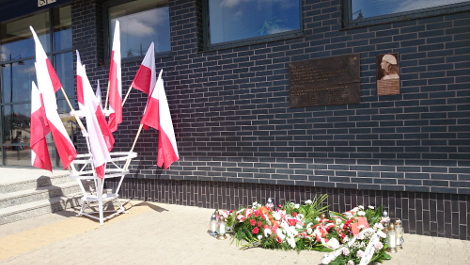
I decided to complete this story with a feminine perspective. Next to the commemorative plaque with names of the soldiers I installed a ceramic plaque with the photo based on Zofia's portrait and the inscription commemorating Zofia. During the aniversary ceremony of the the tragic event which took place at the station I made a performance. I put flowers under the commemorative plaque, I also gave flowers to the soldiers of guard of honor standing guard at the commemorative plaque and to a policeman. Before my action, Ryszard Biberstajn, a writer from Leszno, read his poetic text about Zofia.
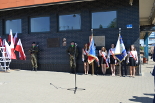
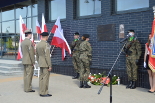
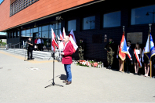
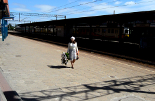
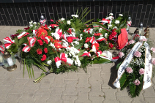
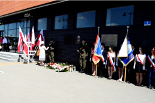
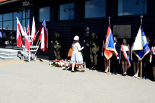
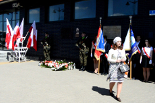
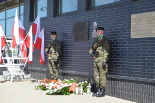
documentation of performance: Sylwia Erbert-Hoja / MBWA Leszno
